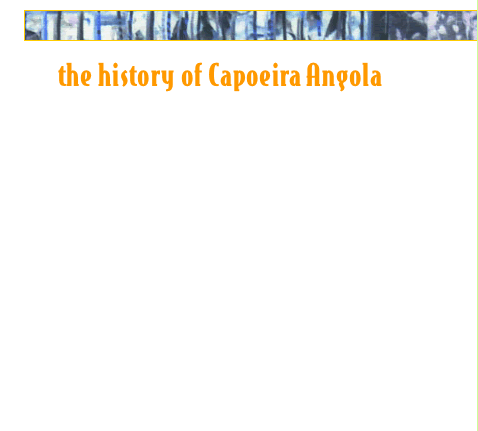 Capoeira
is a martial art form that originated in the sixteenth century among
slaves brought to Brazil from African nations such as Angola, Congo,
and Guinea. The New World slave masters, anxious to keep
their captives under their strict domination, imposed harsh prohibitions
and restrictions on parent forms of capoeira, often referred to as "N'golo".
Capoeira
is a martial art form that originated in the sixteenth century among
slaves brought to Brazil from African nations such as Angola, Congo,
and Guinea. The New World slave masters, anxious to keep
their captives under their strict domination, imposed harsh prohibitions
and restrictions on parent forms of capoeira, often referred to as "N'golo".
 To
ensure their survival, the traditional forms were infused with dance and
a new musical accompaniment. Capoeira's deadly potential was hidden from
the slave-masters by its dance-like elegance, baffling acrobatics, and
the engaging rhythms of its music.
To
ensure their survival, the traditional forms were infused with dance and
a new musical accompaniment. Capoeira's deadly potential was hidden from
the slave-masters by its dance-like elegance, baffling acrobatics, and
the engaging rhythms of its music.





